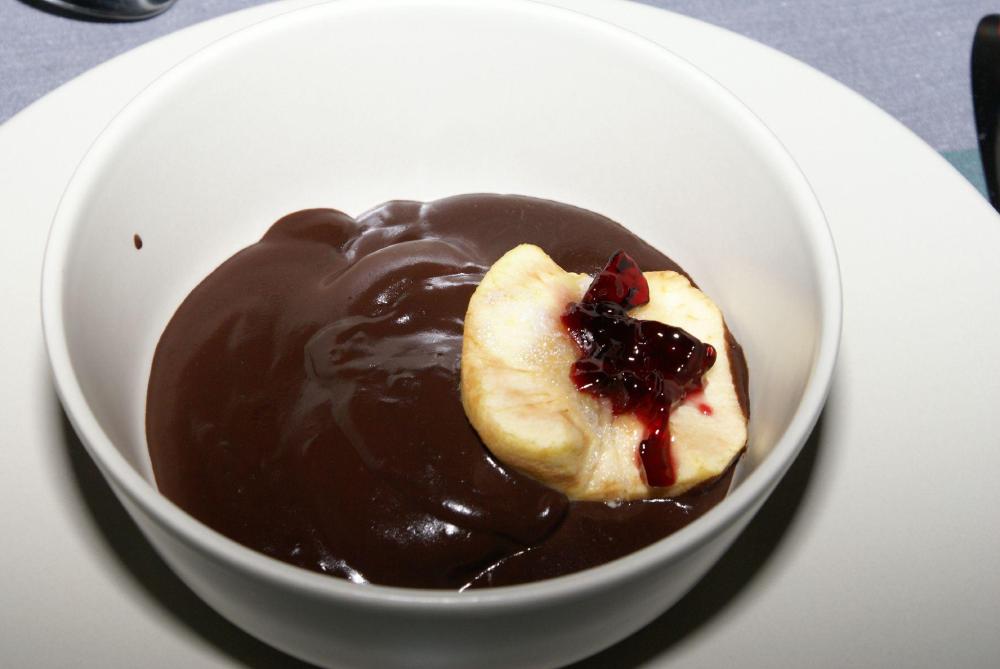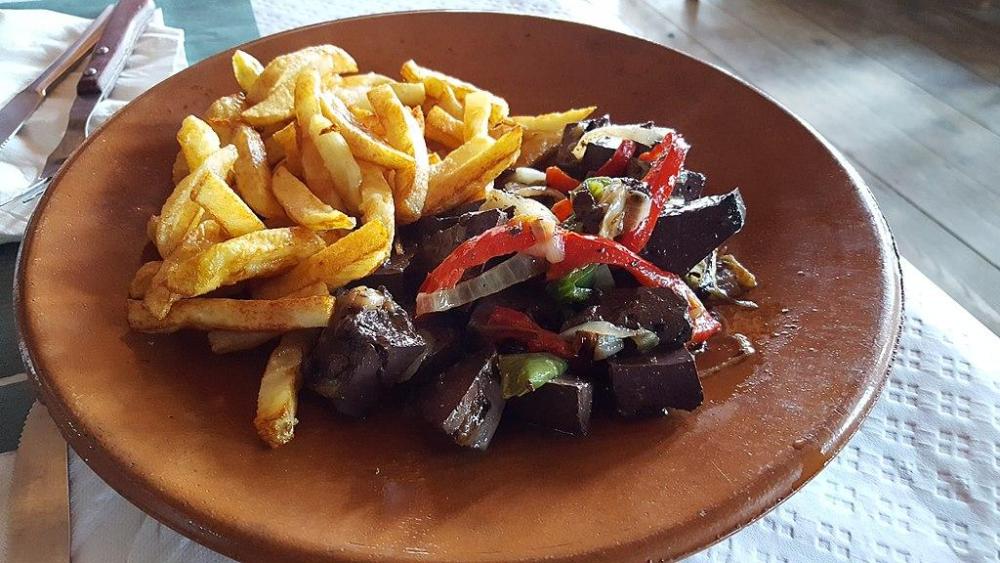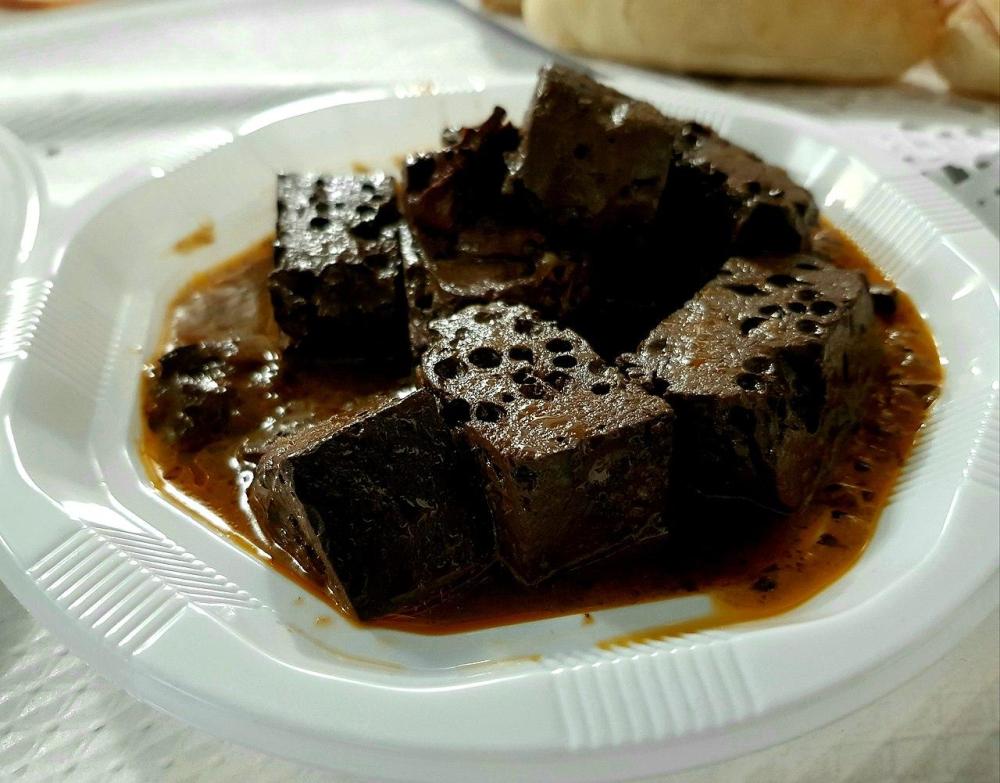Some Highlights of Poultry Blood around the World
1. EUROPE
I guess the most well-known dish to use chicken blood is the French classic, coq au vin, which is traditionally thickened with the cockerel’s blood, although most modern recipes omit it – their loss.
In Portugal, they favour cabidela, a dish of chicken and rice, traditionally cooked with the chicken’s blood. It can be the consistency of a pilau or thinner and more like a risotto depending on the cook. For this you want the best quality chicken you can find and afford. And, of course, you also want the blood, which may not be so easy. Get close to your local poultry farmer!
Cabidela - Image by Jpatokal, licensed under the Creative Commons Attribution-Share Alike 3.0 Unported license.
Sweden has a very old, traditional dish, svartsoppa, literally ‘black soup’ (not to be confused with ärtsoppa, a yellow pea soup.) Svartsoppa is made using goose blood and usually served at a festival on St Martin’s Eve, especially in Skåne in Southern Sweden. It is normally served at the beginning of a full goose dinner with the roasted bird to follow.
Svartsoppa - Image by Andreas Nilsson, licensed by Attribution-NonCommercial-NoDerivs (CC BY-NC-ND 2.0)
In Andalusia in Southern Spain, especially in Seville, you will find la sangre encebollada, ‘blood with onions’, also known as la sangre frita, ‘fried blood’. Traditionally, the ingredients are chicken blood, onions, garlic, white wine, olive oil, black pepper and bay leaf. The congealed blood is cut into small cubes and the onions and garlic poached in the oil until brown, then the blood and bay leaf is added. The pot is stirred and the wine added along with salt and pepper. The wine should cover the ingredients, so if there is not enough, it can be topped up with water. The dish is then simmered until the liquids all but gone. Non-traditionally, pig’s blood is sometimes used as it is easier to source.
La Sangre Encebollada - Image by Xemenendura, licensed under the Creative Commons Attribution 3.0 Unported license.
Staying in Spain, but this time in Valencia, we find sang amb ceba served in tapas bars or as a sharing plate in restaurants. This too is chicken blood with onions, but this time the garlic and onions are fried until half done, then the cubed blood is added along with finely cubed red bell pepper and thyme. It is further cooked until the onion is transparent and then served.
Sang Amb Seba - Image by Joanbanjo, licensed under the Creative Commons Attribution-Share Alike 4.0 International license.
On the other side of Europe, in Belarus, they partake in chornaja poliwka, a soup made of duck or goose blood and clear broth, while Poland has its czarzina or czerzina as discussed in the last post.
Juka is another soup from the Dzūkija region of southern Lithuania. It can be made using goose, duck, or chicken blood.
...to be continued








